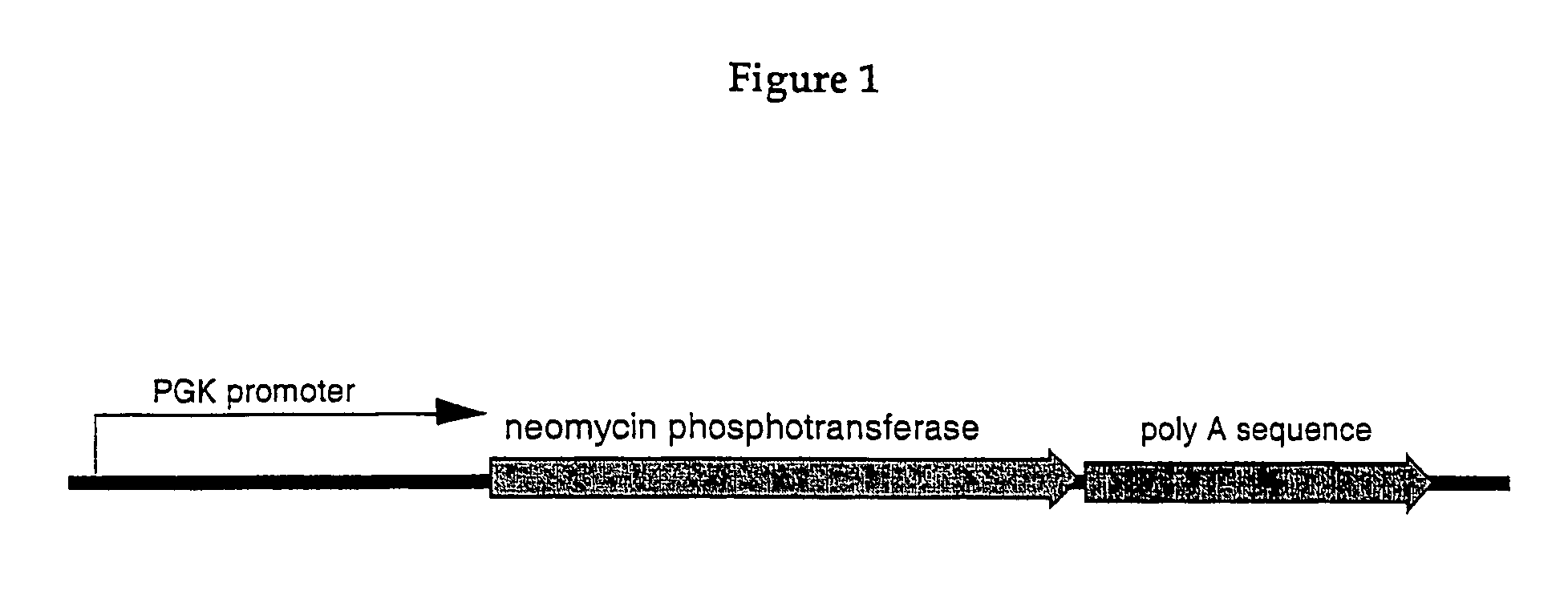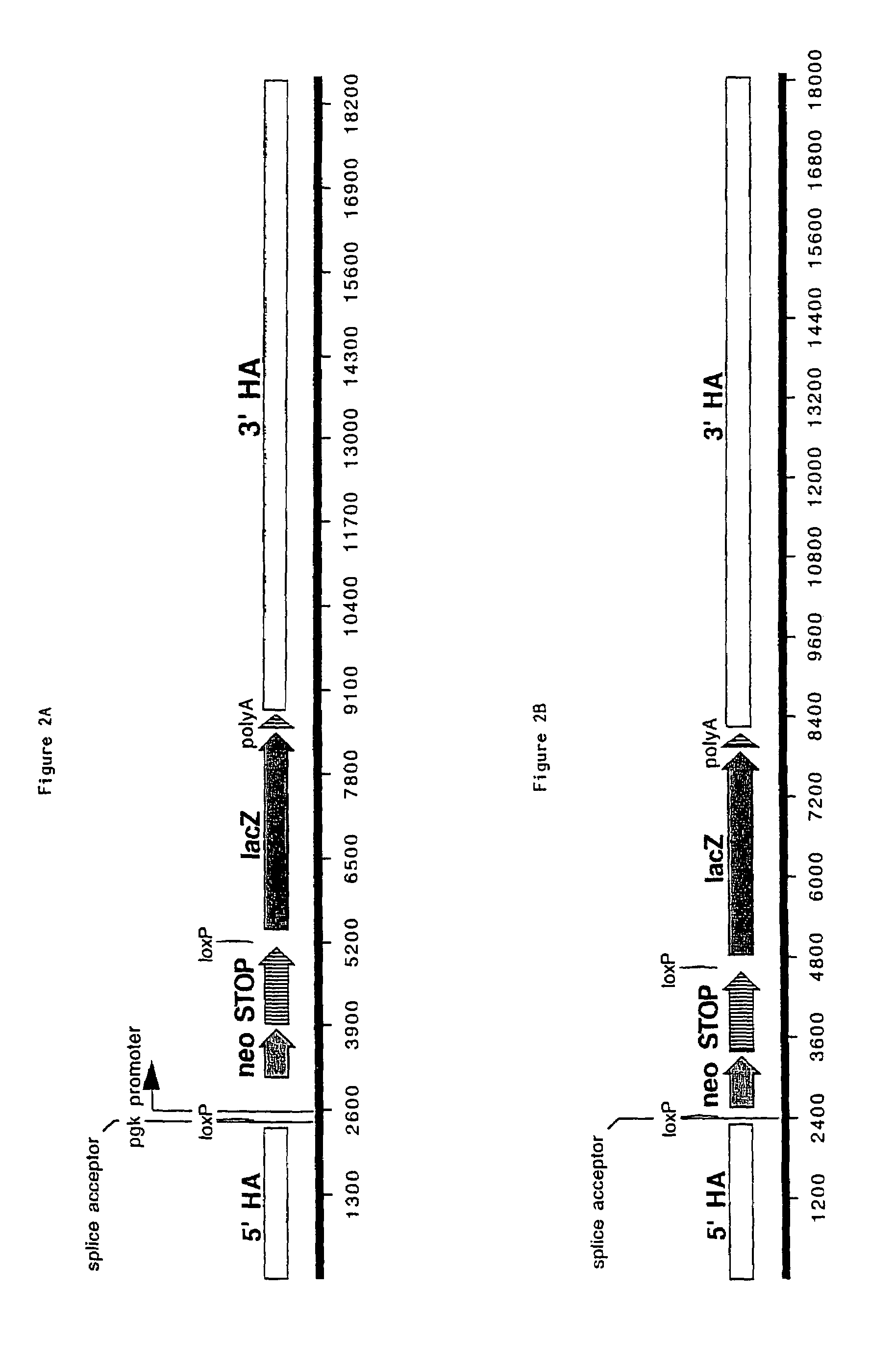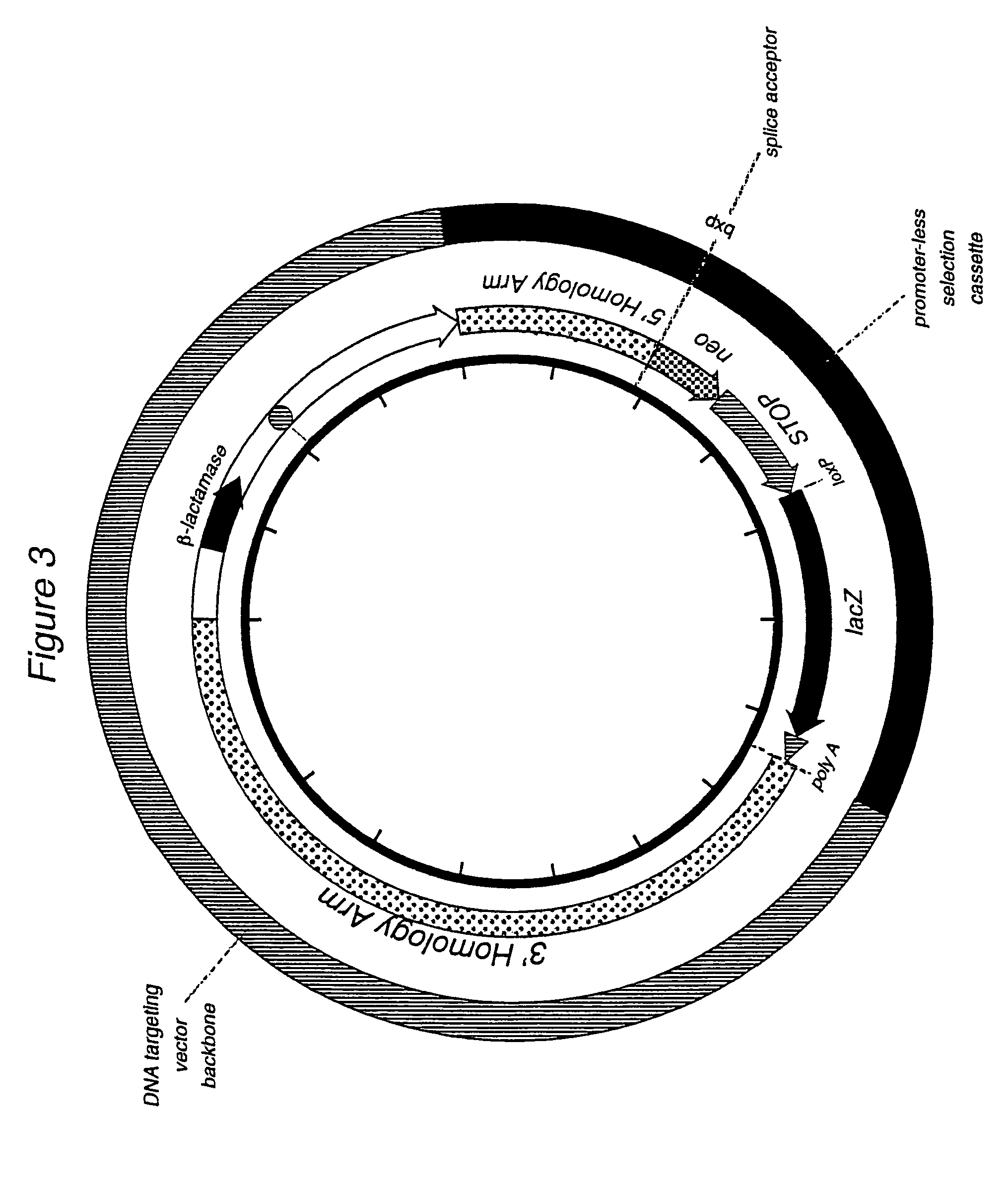Method for targeting transcriptionally active loci
a transcriptionally active and locus technology, applied in the field of targeting transcriptionally active loci, can solve the problems of several technological problems in the current available methods for creating transgenic animals
- Summary
- Abstract
- Description
- Claims
- Application Information
AI Technical Summary
Benefits of technology
Problems solved by technology
Method used
Image
Examples
example 1
[0064]A DNA targeting vector was constructed consisting of an approximately 2 kb 5′ homology arm containing sequence downstream of exon 1 of the ROSA26 locus. The ROSA26 locus encodes for an RNA that is not translated into a protein. (It should be noted that for a transcriptionally active locus where exon 1 is translated, the promoter-less selection marker should be targeted at or before exon 1 or as a fusion to the protein normally encoded by the targeted locus). The 5′ homology arm extends from the Notl site to the Nhel site (Friedrich et al. (1991) supra; Soriano (1999) Nat. Genet. 21:70-71). A selection cassette was inserted at that site. The selection cassette in this specific example is SA-loxP-EM7-neo4xpolyA-loxP, wherein SA is a splice acceptor sequence, the two loxP sites are the locus of recombination sites derived from bacteriophage P1 (Abremski and Hoess, 1984, J Biol Chem, 259, 1509-14), EM7 is a prokaryotic constitutively active promoter, neo is the neomycin phosphotra...
PUM
| Property | Measurement | Unit |
|---|---|---|
| targeting frequency | aaaaa | aaaaa |
| drug resistance | aaaaa | aaaaa |
| frequency | aaaaa | aaaaa |
Abstract
Description
Claims
Application Information
 Login to View More
Login to View More - R&D
- Intellectual Property
- Life Sciences
- Materials
- Tech Scout
- Unparalleled Data Quality
- Higher Quality Content
- 60% Fewer Hallucinations
Browse by: Latest US Patents, China's latest patents, Technical Efficacy Thesaurus, Application Domain, Technology Topic, Popular Technical Reports.
© 2025 PatSnap. All rights reserved.Legal|Privacy policy|Modern Slavery Act Transparency Statement|Sitemap|About US| Contact US: help@patsnap.com



